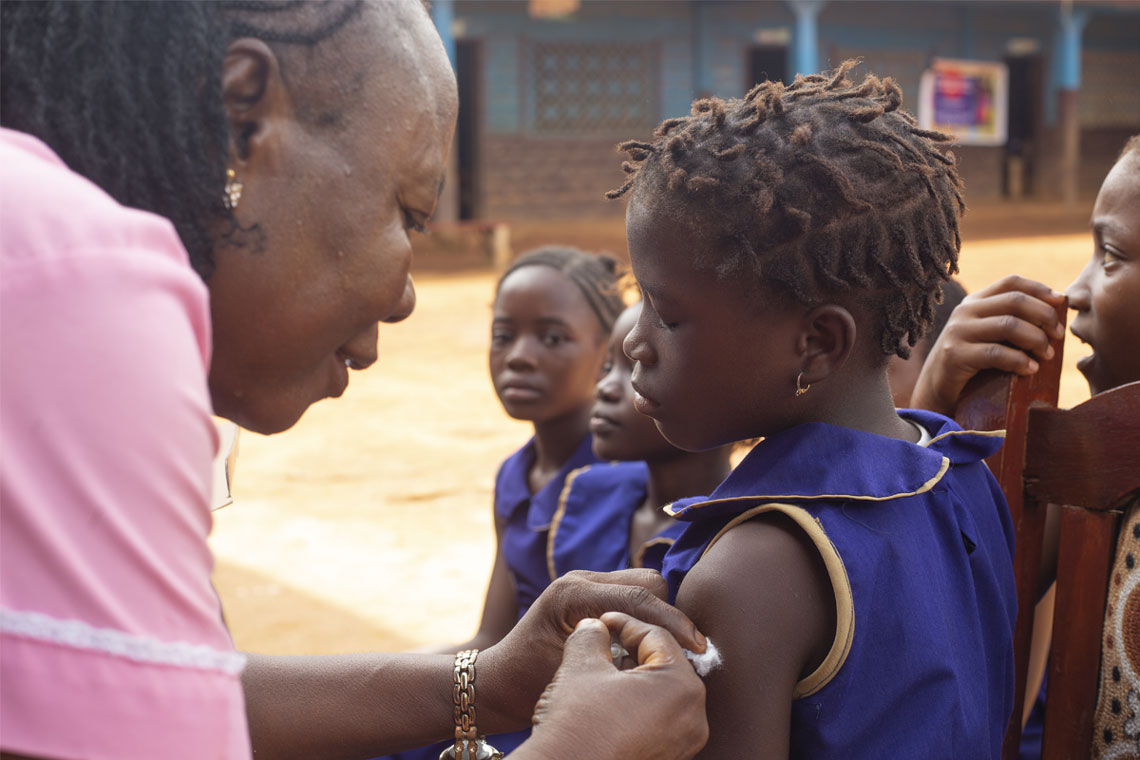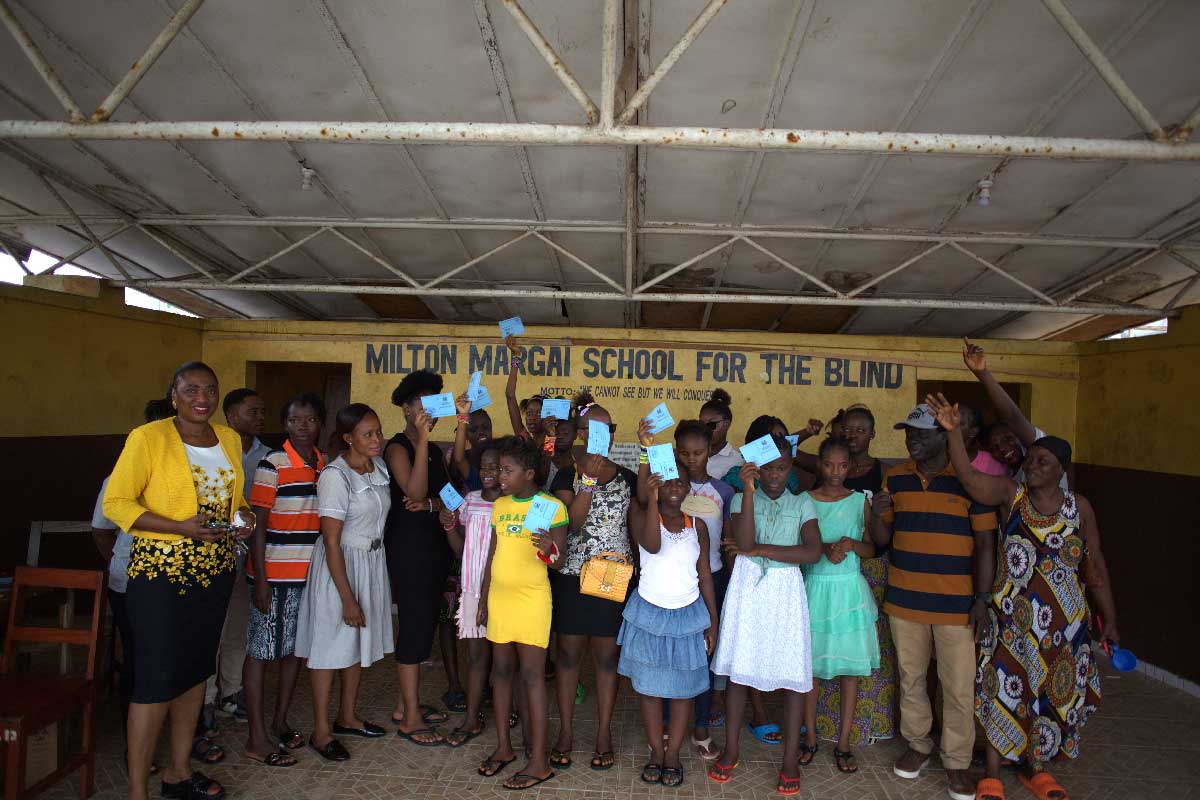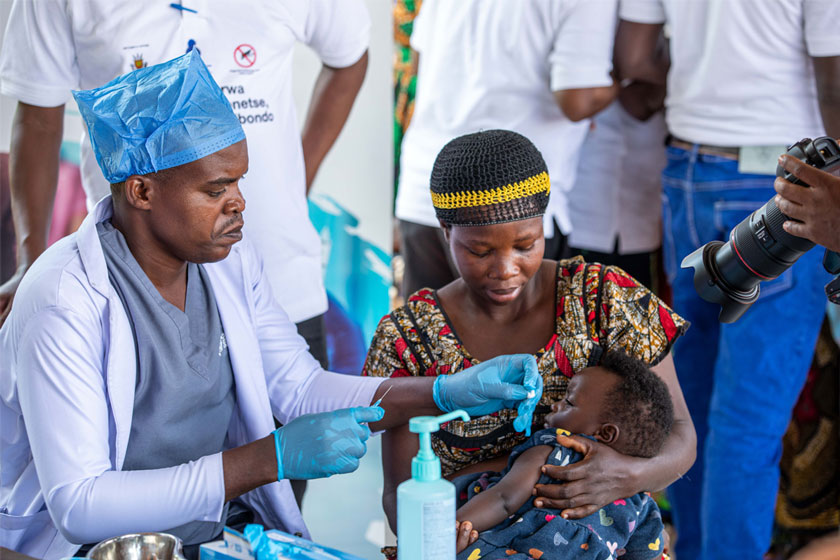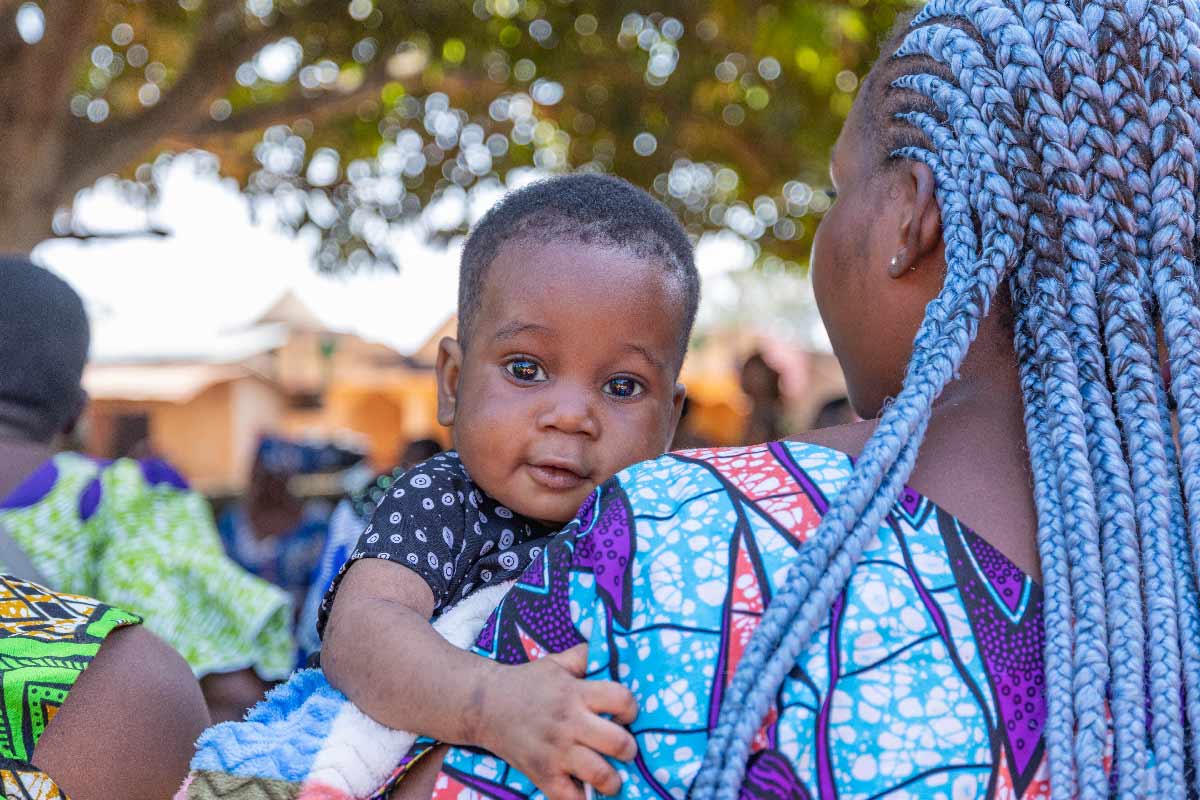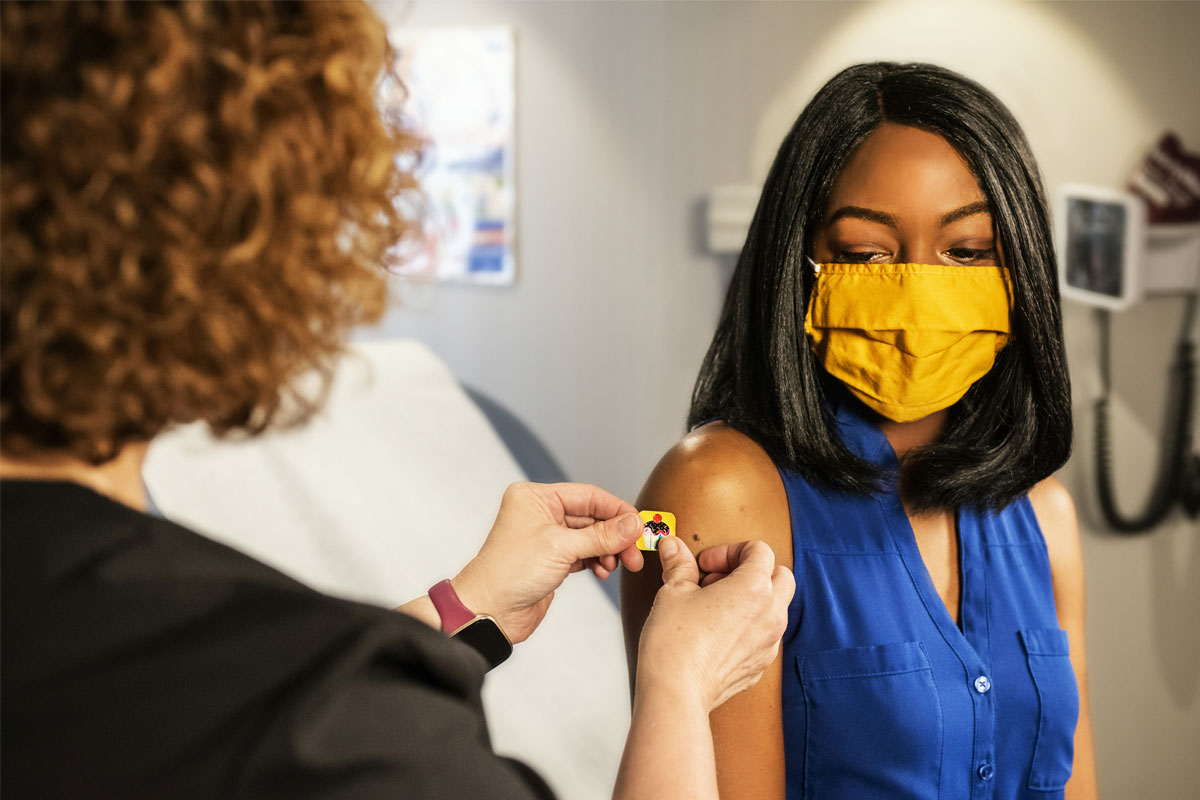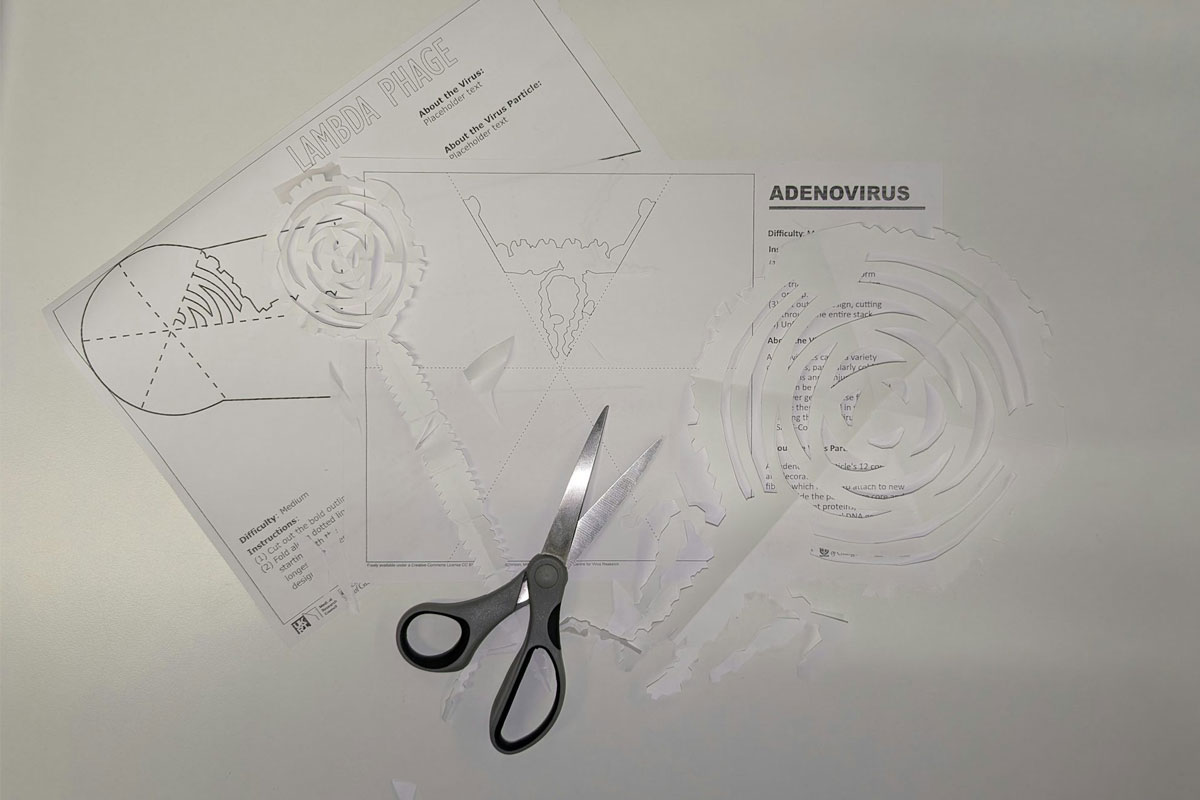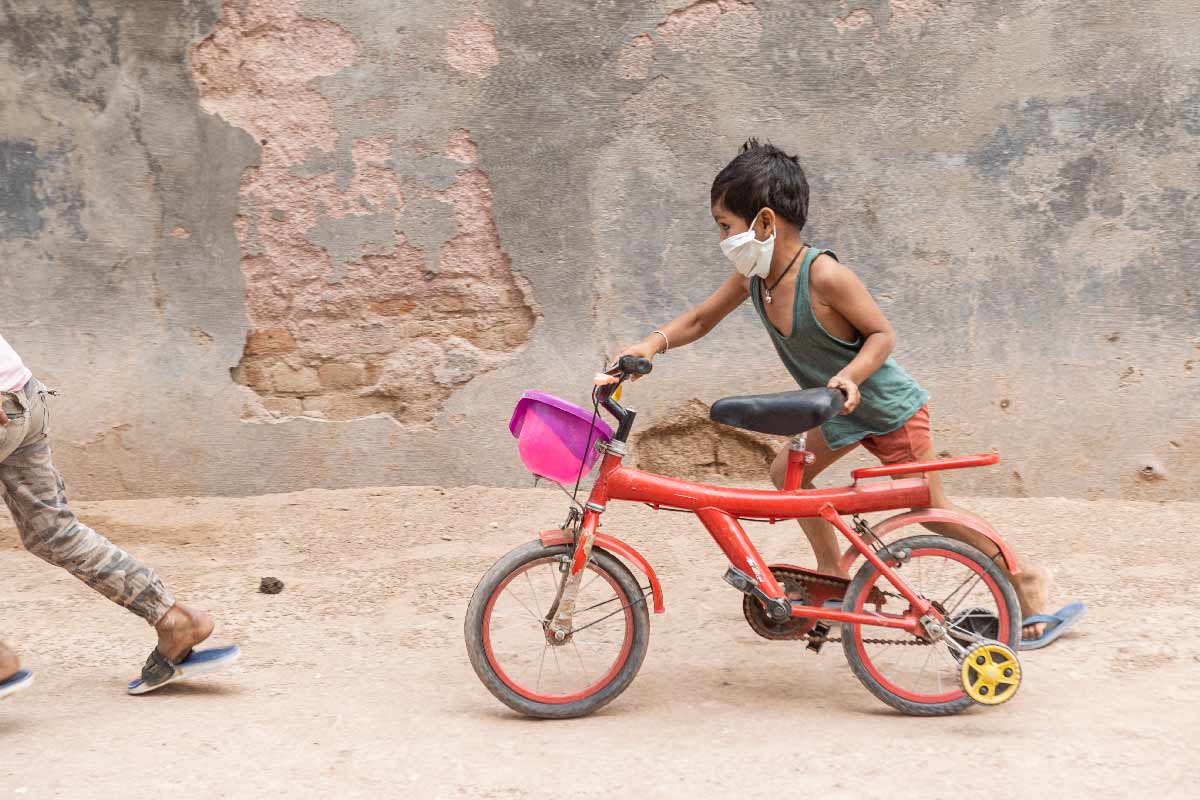7 things everyone should know about the state of global immunisation
New WHO and UNICEF estimates suggest that lower-income countries are protecting more people against more diseases than ever before – but some children are still missing out.
- 15 July 2025
- 6 min read
- by Gavi Staff
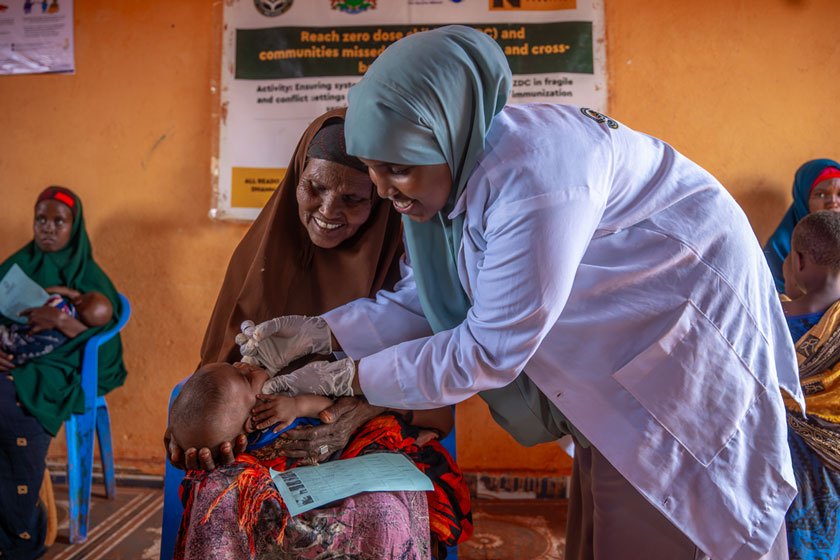
Every year, the World Health Organization and UNICEF release a set of figures that offer a powerful glimpse into the health of the world’s children.
Known as the WHO/UNICEF Estimates of National Immunisation Coverage (or WUENIC, for short), this dataset tells us how many children across the globe are being protected against deadly but preventable diseases like measles, tetanus and polio.
Between 2000 and 2024, more than 1.2 billion children have been immunised with its support – topping Gavi’s original goal of 1.1 billion by 2025.
The latest numbers are in. So how are we doing? And what does this data reveal about progress in the 57 lower-income countries supported by Gavi, the Vaccine Alliance?
Here are seven key takeaways that paint a picture of where things stand, and where we need to go from here.
1. More children are being immunised with Gavi support than ever before
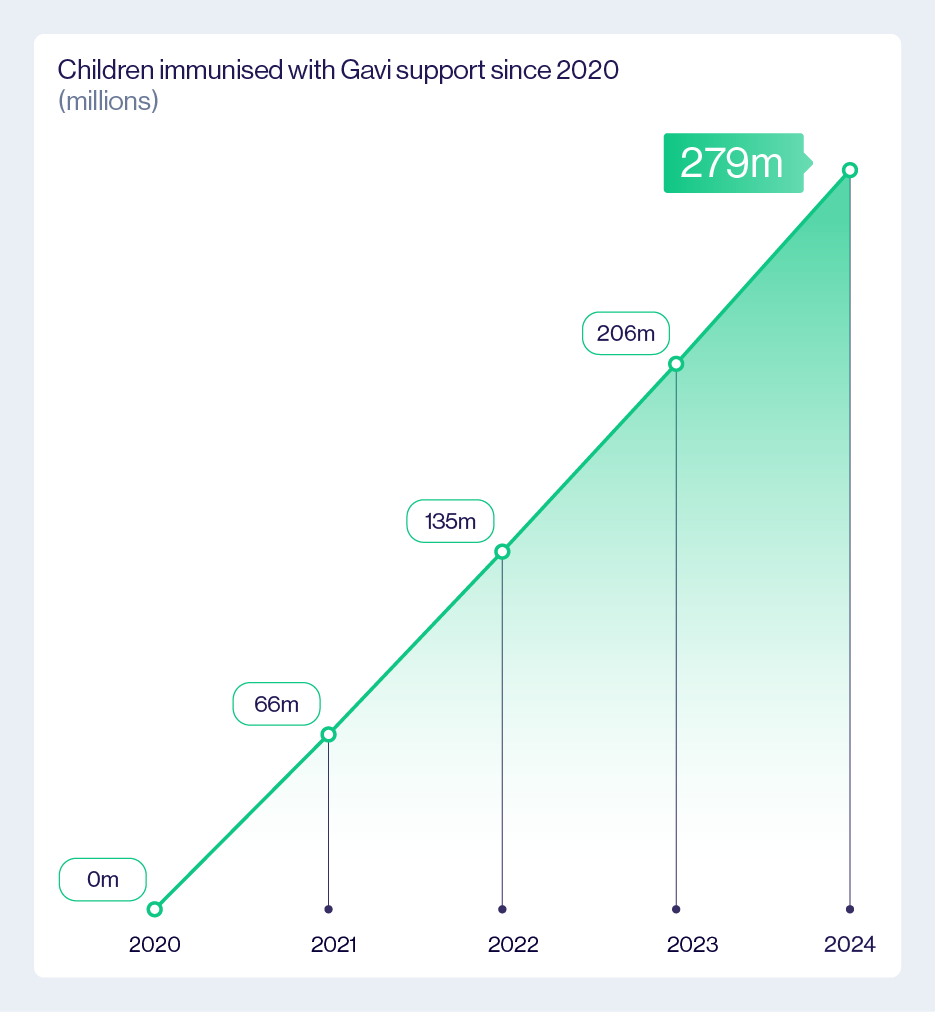
In 2024, more than 72 million children in lower-income countries were vaccinated against a range of deadly infectious diseases – more than in any year previously.
This remarkable achievement, bolstered by Gavi’s routine immunisation support, reflects not just logistical progress, but a growing commitment by countries to invest in immunisation through co-financing – where countries contribute towards the cost of the vaccines they receive. In 2024, lower-income countries contributed a record US$ 255 million towards co-financing.
This momentum has helped Gavi surpass one of its biggest milestones: between 2000 and 2024, more than 1.2 billion children have been immunised with its support – topping Gavi’s original goal of 1.1 billion by 2025.
2. Basic vaccine coverage rates are steadily on the rise following declines during the COVID-19 pandemic.
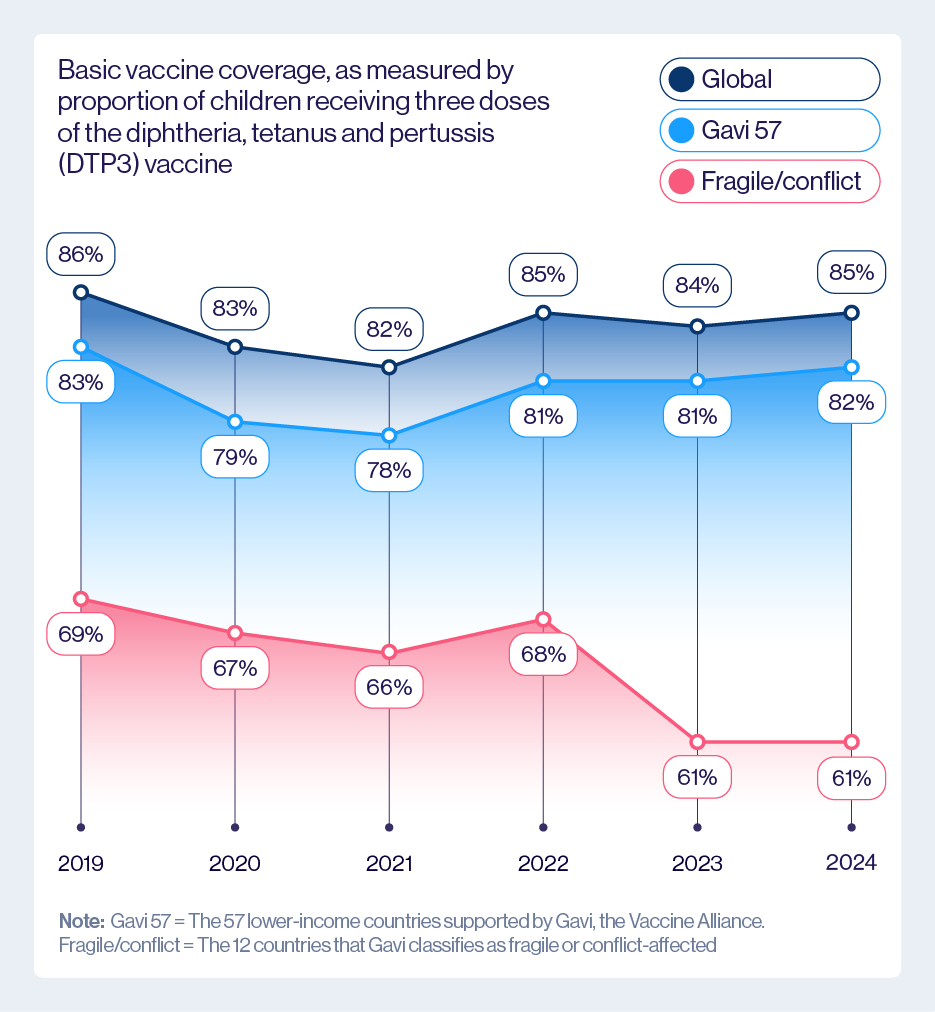
In 2024, 70% of Gavi-supported countries maintained or improved coverage with three doses of diphtheria, tetanus and pertussis-containing (DTP3) vaccine – often used as a proxy to measure countries’ ability to consistently reach children with essential vaccinations.
As a result, DTP3 coverage in Gavi-supported countries increased to 82%, which is one percentage point (pp) shy of pre-pandemic levels.
Many African countries have now fully recovered, with DTP3 coverage back up at 76% – the same as it was in 2019 – even though population growth means countries must reach increasing numbers of children to achieve gains. The largest gains were in Mali (+7pp), DR Congo (+5pp), Rwanda (+4pp) and Ethiopia (+3pp).
However, not all regions fared so well. Despite gains in many Gavi-supported countries in WHO's Eastern-Mediterranean region – including Pakistan, Syria, and Somalia – overall DTP3 coverage in the region dropped to 79%, due to large conflict-related declines in Sudan and Yemen.
Also, whereas lower-middle-income countries have fully recovered from pandemic-related declines, average DTP3 coverage among the 26 low-income countries that Gavi supports remains at 70%, down from 75% in 2019.
3. Routine childhood immunisation in fragile and conflict-afflicted countries is holding steady, with many showing improved coverage
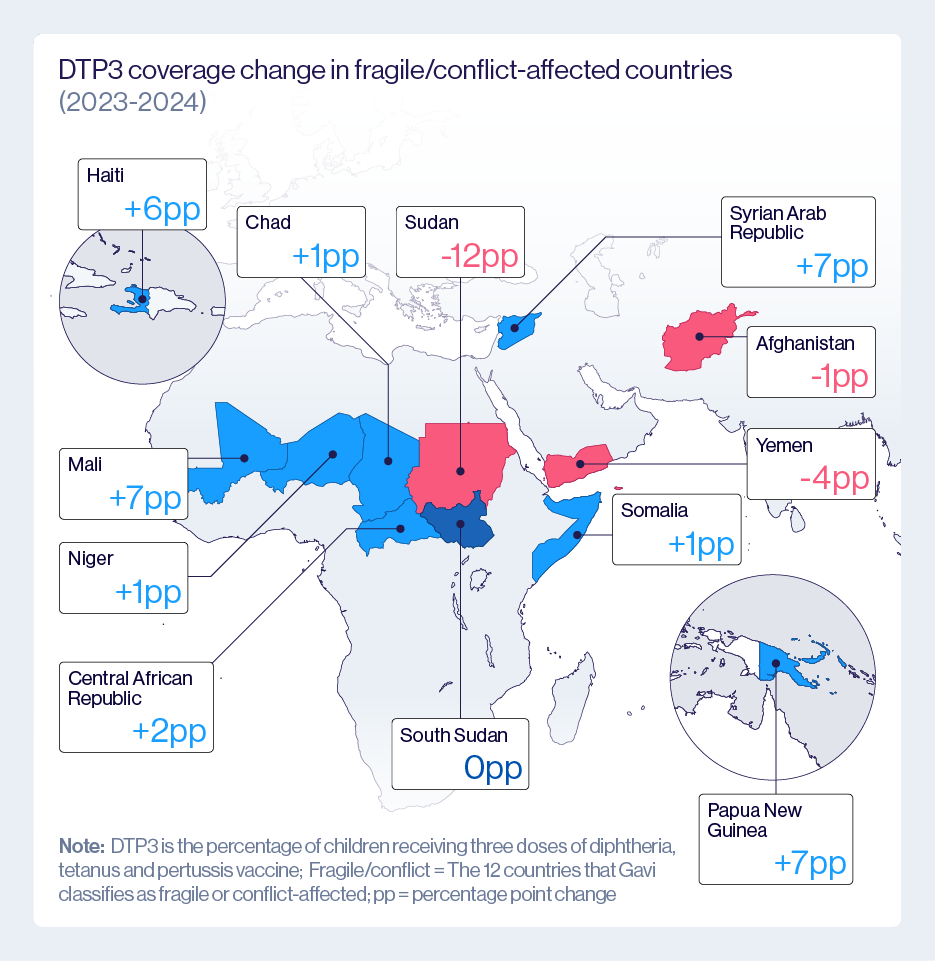
Maintaining immunisation coverage in areas grappling with fragility and conflict is no small feat, but in the 12 countries that Gavi classifies as such, coverage with three doses of DTP3 held steady at 61%, after a sharp decline from 68% to 61% between 2022 and 2023.
Have you read?
Large declines in Sudan and Yemen – down 12pp and 4pp respectively – masked significant improvements in other fragile and conflict-impacted countries – including large 6–7 percentage point gains in countries such as Mali, Syria and Haiti – showing that even in the toughest settings, progress is possible with the right support.
4. Measles vaccination coverage in lower-income countries has also increased
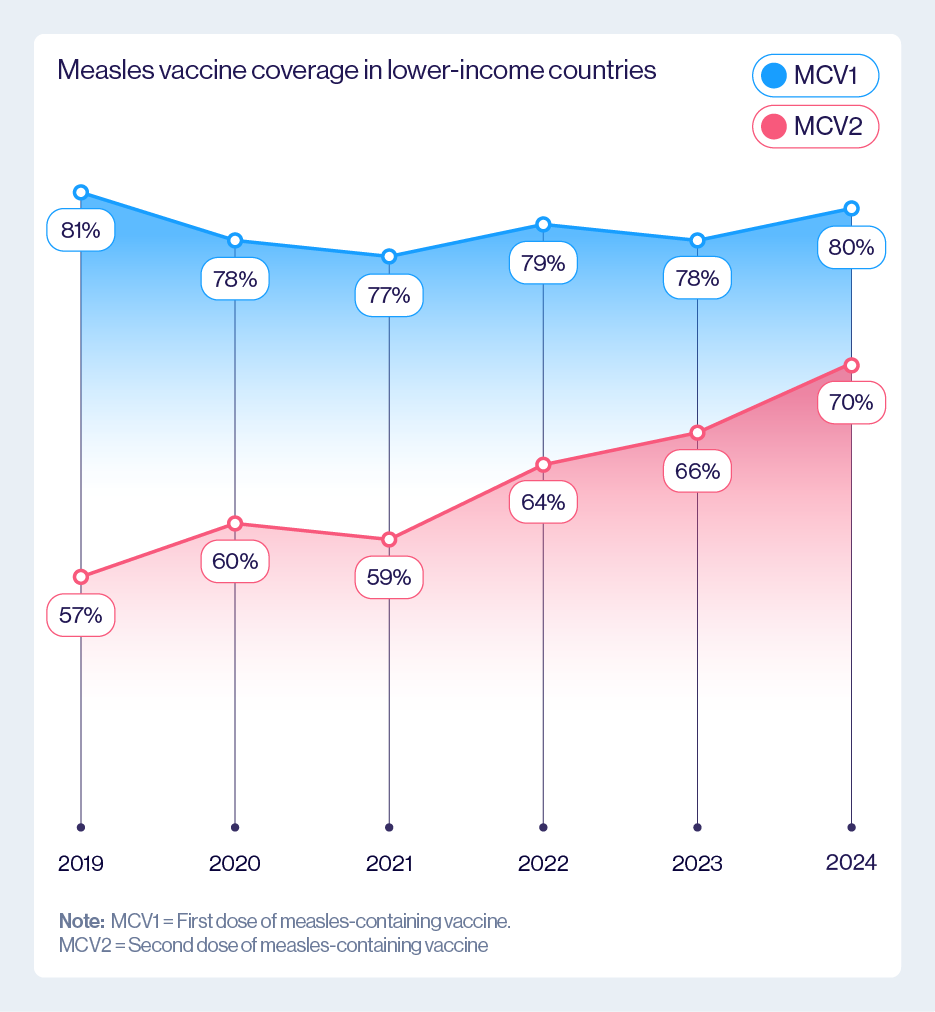
Measles vaccination rates are rebounding after sharp pandemic-era declines, but immunity gaps remain dangerously wide.
The virus’s exceptionally high transmissibility means that even small drops in coverage can trigger serious outbreaks, and most countries are well below the 95% coverage needed to stop measles outbreaks from occurring.
During the COVID-19 pandemic, many countries delayed carrying out planned introductions and large-scale preventive vaccination campaigns. To address this, Gavi and countries have accelerated measles efforts in recent years, reaching hundreds of millions of children through routine, preventive and outbreak vaccination.
These efforts are paying off. First-dose measles coverage (MCV1) rose to 80% in 2024 – up 2% from the previous year – driven by gains in some of the world's most populous countries.
Second-dose coverage (MCV2) has also climbed, from 59% in 2019 to 70% in 2024, with persistent efforts to introduce this vaccine into routine immunisation programmes yielding results.
Despite this progress, in 2024, 15.5 million children in lower-income countries missed their first dose of measles vaccine – making up three-quarters of the 20.6 million children who went unvaccinated against measles worldwide.
5. Children are being protected against more diseases than ever before
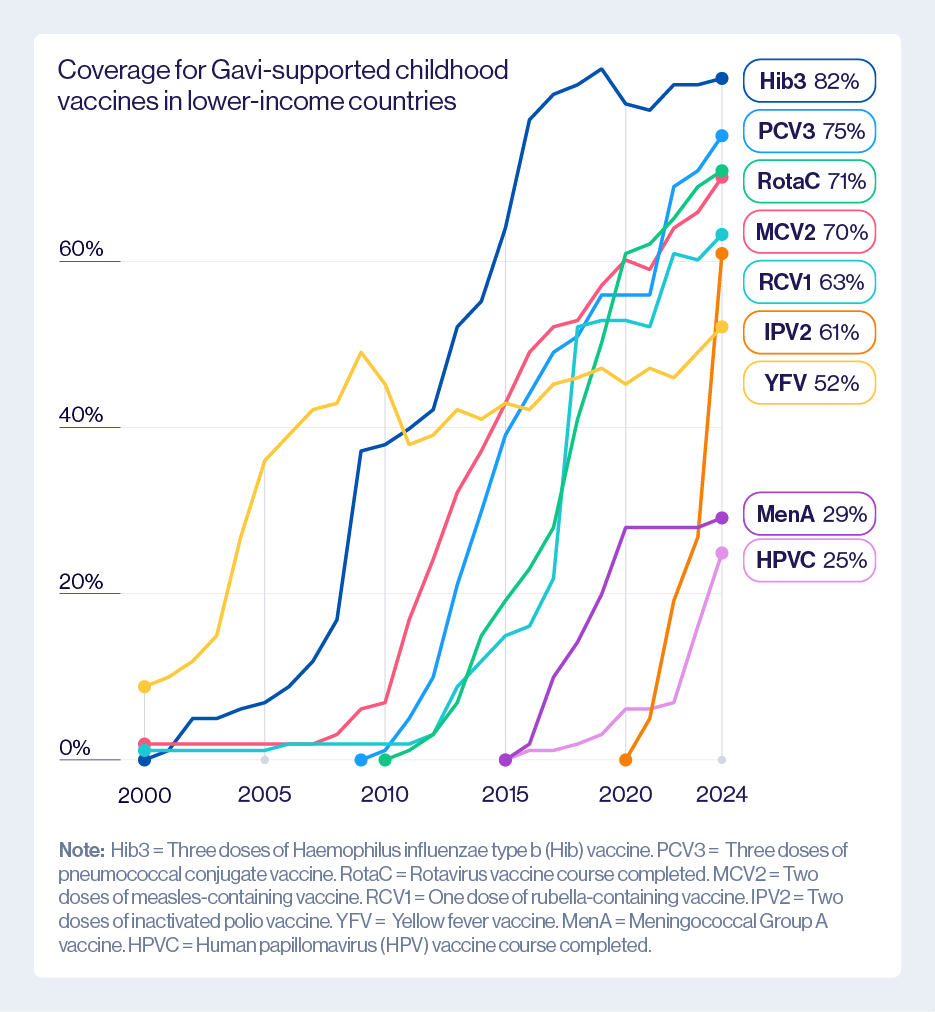
Lower-income countries are now protecting more people against more diseases than at any point in history.
In 2024, average vaccination coverage rose by 8pp across ten vaccines supported by Gavi, with notable gains in routine immunisation against polio, cervical cancer, measles, pneumonia, rotavirus and yellow fever.
6. More girls are being protected against cervical cancer

This historic progress also extends to protection against cervical cancer.
HPV coverage in lower-income countries has risen from 3% in 2019 to 25% in 2024 – with more than twice as many girls vaccinated with Gavi support during 2024 (32.6 million) compared to 2023.
Since revitalising its human papillomavirus (HPV) programme in 2023, Gavi has helped drive a dramatic scale-up in protection against one of the leading causes of cancer deaths among women in lower-income countries.
Thanks to these efforts, more girls in lower-income countries were protected with the HPV vaccine in 2024 than in the entire previous decade combined. HPV coverage in lower-income countries has risen from 3% in 2019 to 25% in 2024 – with more than twice as many girls vaccinated with Gavi support during 2024 (32.6 million) compared to 2023.
As of 2024, nearly 60 million girls in total have been fully protected against HPV with Gavi support – well on track to meeting the Alliance target of 86 million by the end of 2025.
7. The number of children receiving no essential childhood immunisations has declined – but there’s still a long way to go
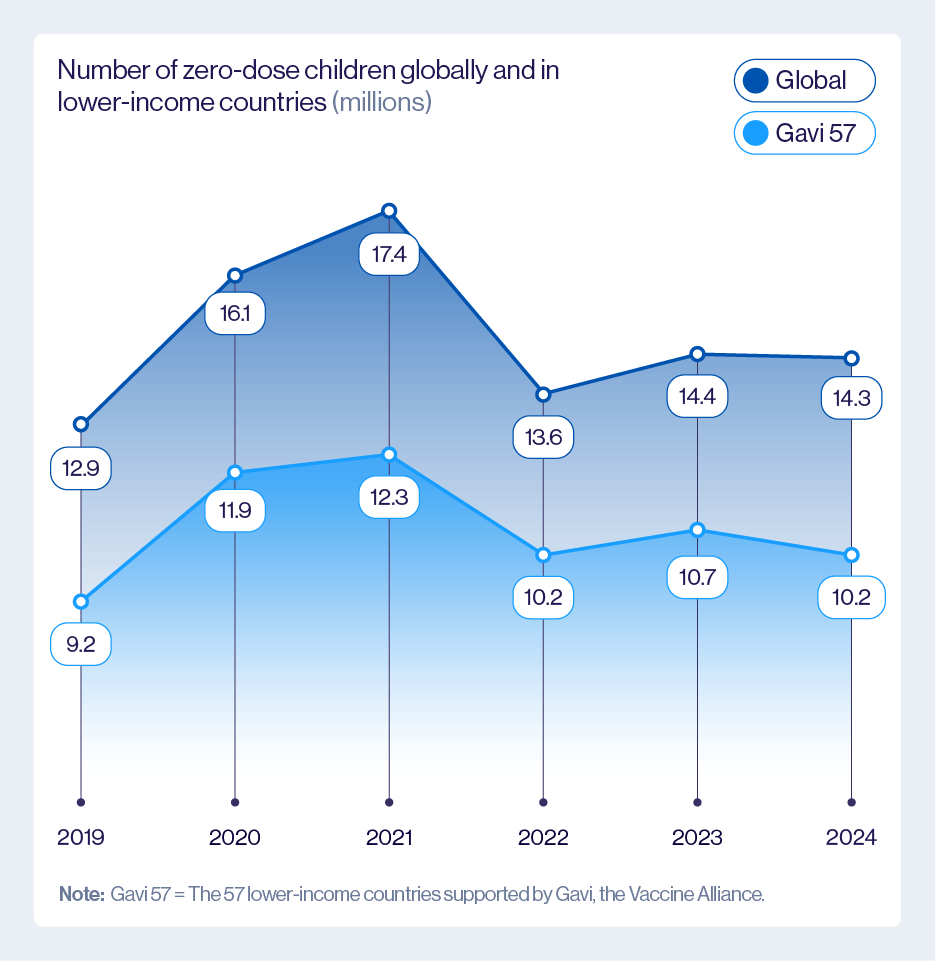
The number of zero-dose children – those who have not received even a single vaccine shot – in Gavi-supported countries fell by half a million in 2024.
Coverage with the first dose of diphtheria, tetanus and pertussis-containing vaccine (DTP1), is an important indicator of how many children don’t have access to life-saving vaccines. This stood at 87% in 2024 – which is nearly back to pre-pandemic levels – largely thanks to targeted efforts in populous countries like India, Democratic Republic of the Congo (DRC) and Ethiopia.
Even so, millions of children remain unprotected, with the COVID-19 pandemic, population growth and fragility all slowing progress. Nearly half (4.9 million) of the 10.2 million zero-dose children in lower-income countries live in five populous countries – Nigeria, DRC, India, Pakistan and Ethiopia – which together account for 60% of the birth cohort in Gavi-supported countries. A further 2.9 million live in fragile or conflict-affected settings.
To reach unvaccinated children in fragile settings, Gavi works closely with countries through targeted programmes, including the Zero-dose Immunization Programme (ZIP). It has delivered nine million vaccine doses in conflict-affected regions in Africa – immunising an estimated 1 million previously missed children.
Yet progress is still far behind Gavi’s 2025 goal of reducing the number of zero-dose children to 6.9 million by 2025 (a target created before the pandemic damaged health systems worldwide). This would require a 32% drop over the next year.
